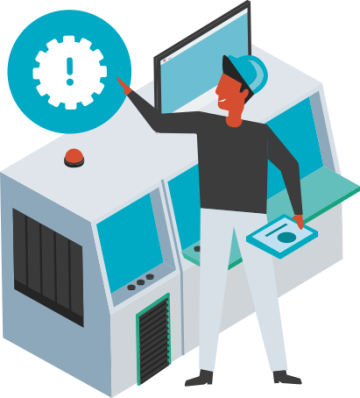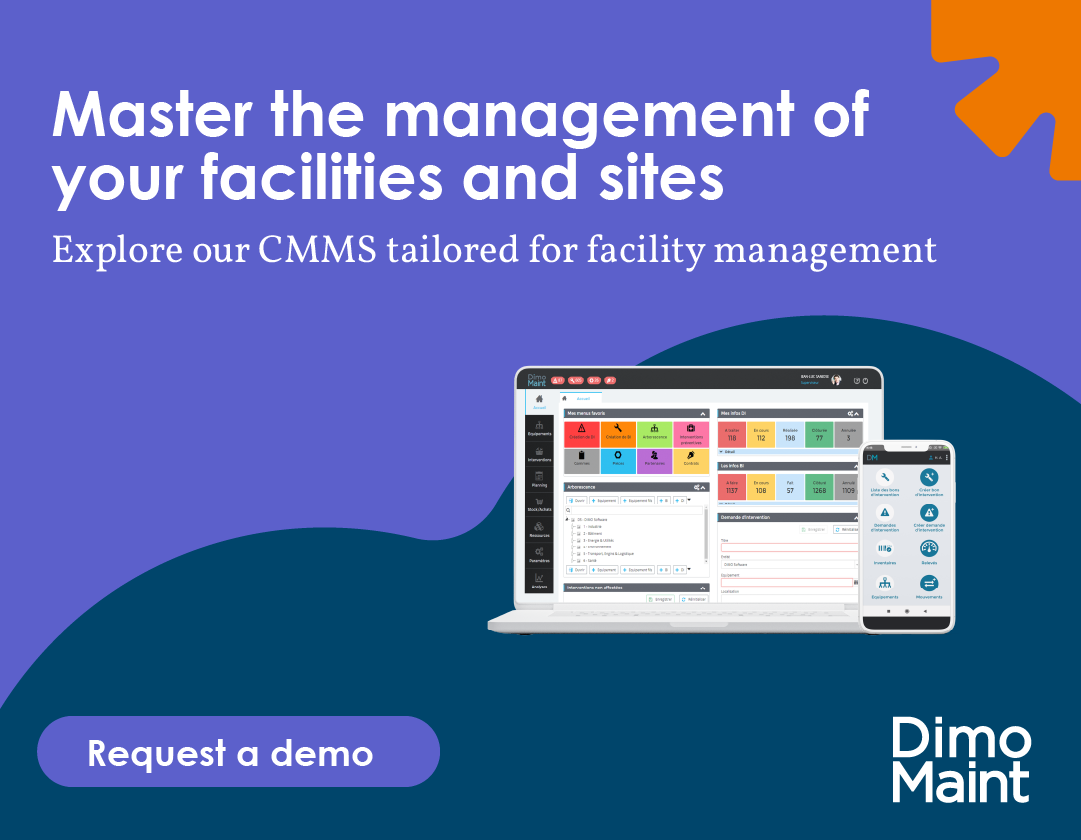Just like many other spaces, commercial offices are subject to increasing maintenance demands. Facility management must consider the well-being of occupants, their work habits, and current regulations, all to achieve a safe and productive working environment. In this context, CMMS offers unmatched reliability and greatly simplifies everyday tasks. Discover the challenges of maintenance within commercial offices and how the features of a CAFM software meet these needs.
The stakes of optimized maintenance in the commercial office sector
As a daily setting conducive to the emergence of ideas and collaboration, commercial offices must be perfectly functional and adapt to new work modes. Corporate building maintenance must meet challenges as varied as:
The productivity of teams

Furthermore, companies often face the additional challenge of coordinating their maintenance so as never to disturb teams during their routine. Regularity constraints are thus combined with a strong need for coordination of operations.
Safety and compliance with standards

Regulatory changes have recently multiplied to reduce the energy consumption of buildings. While the environmental benefits and positive outcomes for the company are certain, the implementation of these measures represents a significant responsibility. The energy aspect of commercial building maintenance must be perfectly coordinated to avoid any penalties.
The brand image and attractiveness of the company

For the company, effectively managing its building maintenance also means freeing up time. Time that will allow continuous improvement in the layout of the offices and the identification of new organizational forms that will benefit employees.
How CMMS centralizes the management of commercial office maintenance ?
Anticipation of breakdowns and interruptions: Preventive maintenance enables commercial offices to anticipate potential failures by conducting regular inspections of premises and performing necessary repairs in advance. By identifying and rectifying failures before they disrupt daily activities, service interruptions are minimized, and employee productivity is maintained at an optimal level.
Reliable maintenance of high-tech devices: Sensors, security devices, and other equipment designed to maximize building performance require precise monitoring, possible only with a structured CMMS maintenance. Whether dealing with large premises or multi-site companies, CMMS provides an overview of all critical equipment and ensures they are prioritized during maintenance operations.
Optimization of performance and resource utilization: Proper and regular maintenance of office installations and equipment extends their use. Less frequent renewal of building equipment and IT assets results in more efficient use of a company’s material and financial resources.
Traceability of operations and employee safety: Maintenance of security equipment and critical installations is essential to ensure a safe work environment. Regular inspections, safety tests, and preventive repairs help to bring the company in line with strict standards. And if an incident occurs in the office, maintenance must enable a quick resolution thanks to the documentation of past interventions. CMMS brings rigor to the maintenance of commercial offices and facilitates compliance with current regulations.
Case Study : Discover how Westpark Shannon Business Campus uses CMMS to facilitate the management of commercial office maintenance.
Westpark Shannon is Ireland’s premier international business campus, home to 50 client organizations. WSL is the team responsible for managing these facilities and their maintenance.
The central facilities team consists of 4 people who manage maintenance, buildings, and equipment by calling on more than 50 contractors and internal engineers.
With the campus’s success and the steady increase in the number of its tenants, it became necessary to adopt a suitable CMMS to oversee compliance with standards and support service delivery.
Read the full testimonial from Westpark Shannon.
Looking for maintenance software to optimize your Facility Management?
CMMS, a precision tool for commercial office maintenance
The digitization of maintenance processes is a choice solution for commercial office managers seeking better organization. A Computerized Maintenance Management Software meets the basic requirements of any business but goes further by optimizing everything possible, without disturbing employees. Commercial offices would benefit from using it for their facility management, thanks to:
Complete visibility into needs and resources
CMMS provides, at a glance, a complete vision of assets and their maintenance needs. It is thus possible to step back and better orchestrate the distribution of resources. CMMS dashboards offer a clear view of assets in real-time. This results in a double benefit: commercial offices are maintained on time, and the company avoids costly unexpected issues due to this increased visibility.
Custom-building maintenance
Curative, preventive, or predictive maintenance: with CMMS, the upkeep of equipment can be tailored to each type of asset without complicating management. From conditional maintenance alerts to intervention schedules, CMMS ensures regularity of operations according to the exact needs of the equipment. The company thus develops maintenance that fits its identity, saves operational time, and ensures that none of its equipment is neglected.
Traceability and communication
There are no gray areas in facility management with CMMS! The software allows for complete documentation of interventions, and thus the sharing of information from one maintenance operation to the next. This is especially important when aiming to improve quality. The compliance of the building is thus assured, and human resources are better allocated. For the company, the time savings and cost reductions are immediately tangible.
Information sharing as a source of improvement
From environmental issues to adapting to nomadic work modes, CMMS provides all the information commercial offices need to continuously improve. Automation, visibility into maintenance schedules, and information sharing are key elements for adapting to new employee needs and anticipating tomorrow’s challenges.




